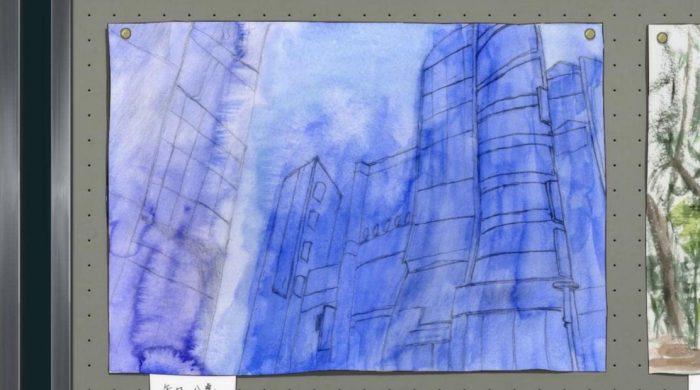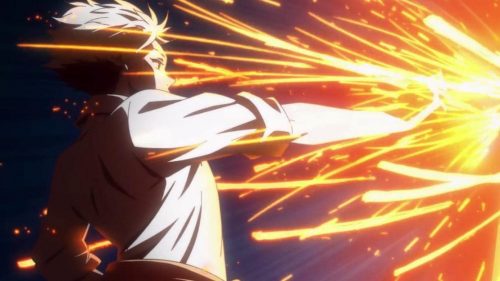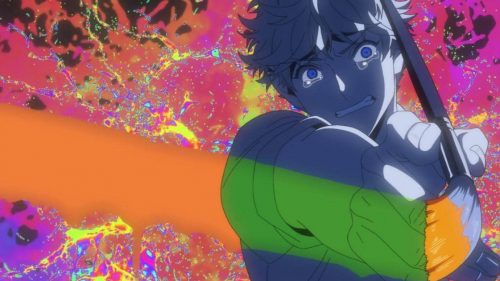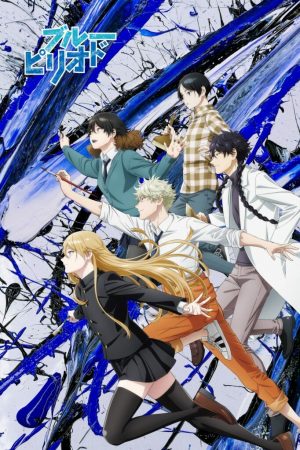Blue Period - Finally, a Nuanced Anime About Art!


Anime fans of the slice of life genre will know all about its strengths; particularly, its ability to make magical the mundane, and therefore, also capture the intricacies contained therein. Now, art is in no way “mundane”, however, Blue Period is a slice of life anime that delves into something other titles have touched upon in the past, albeit in different contexts, but for the most part, we’ve never really had an anime that was an honest love letter to visual art and the creative process. Until now. Blue Period is a very interesting take because our protagonist is a beginner, someone who would be not unlike the any random person watching the show when it came to his artistic exploits, in fact, Yaguchi Yatora is a teenager who is totally new to art and finds himself blown away by the work of a senior in the art club, Mori. Having developed an interest and passion for art, Yatora makes a major life decision: he will try his luck at getting into Tokyo University of the Arts! Well, let’s get into what makes Blue Period such a breath of fresh air before we end up spoiling the whole show! That being said; however, there will be some spoilers in this as the series is in its seventh week. There are also some sensitive topics in this article, so content warnings for transphobia, and deadnaming to name a few. We will try our best to engage with respect and sensitivity, and we encourage that if anything needs to be corrected or is problematic, that you tell us in the comments!
Characters

Yaguchi Yatora
The show’s protagonist is a blonde-haired, pierced delinquent (in a “smokes cigarettes and partakes in underage drinking” kind of way, not like Tokyo Revengers) who is in the last spurt of his second year of highschool, a time which many of us can remember as insanely stressful as it is around the time when one is expected to make significant decisions like choosing what to do with the next chapter of one’s life. Yatora and his circle of friends are all individuals who feel somewhat hopeless about the future and have resigned to the labels given to them by the people around them. He’s a teenager who has no idea who he wants to be and suppresses his true self in order to be favoured by his friends and people in general. Yatora has no real sense of purpose, nor does he have any real desires. There is also a huge sense of disinterest in pretty much everything except what his friends are into, so Yatora is prone to doing things to fit in. However, this stems from the character’s emphasis on social standing and that which is expected of an individual in society. He’ll work hard at anything that can help his overall standing, so despite being a delinquent who has given up on school and has no real plans for the future, Yatora is diligent when it comes to school work and performs at a very high level. His outlook on human social interactions influences how he interacts with people beyond projecting a certain image or doing well at school. In the very first episode, we’re shown his brutal verbal match with Yuka, in which he dead-names her (which he continues throughout the show), implies that her artistic endeavours are pointless, and says that she’d be better off using her beauty to gain the attention of rich men, as well as making several problematic comments about her choice in school uniform. Yatora is granted complexity by these various factors, but the character begins to blossom when he delves into art and hence gets to express himself honestly for the first time. He says that he “finally feels like he’s having an actual conversation with people” when his friend correctly sees Yatora’s submission for the art class project, “My Favourite Scenery” as the view of Shibuya in the early morning. This is hugely significant, as he describes it as a “blue”, even though the buildings themselves aren’t actually blue, it feels that way and he uses the technique he witnessed in the art room the day he first saw Mori’s art.

Ayukawa Yuka
Formerly named Ryuuji (and still referred to as such by Yatora), Yuka is a second-year student who is in the same class as Yatora. She was born male but presents female and has always had people perceive her as a girl. Yuka says that girls would confide in her almost more than they would in other girls, even if they knew that she was “a guy”. This has, in a sense, alienated Yuka, even if people are accepting of her on the surface, she still experiences a sense of loneliness on top of her complicated relationship with her own identity. This becomes a huge point for Yuka as a character, as her gender identity and sexual orientation have been met with bigotry and a lack of understanding, and when there has been “tolerance” of those aspects of herself, it has often been not borne from a desire to get to know her as a person. This is further exacerbated by the fact that she is deemed to be physically attractive, so not only is she perceived as “that guy who dresses in girls’ clothing”, he’s “the guy who is cuter than most of us girls despite being a guy”, both of which are problematic on their own level. Artistically, Yuka is supposedly very experienced; however, by the end of the sixth episode, we still haven’t actually seen any of her artwork. She has a desire to get into an art school like many of her art club contemporaries, and her experience has allowed her to serve as an important support pillar for Yatora in his artistic infancy, as well as a guide who assists him in that journey.
Takahashi Yotasuke
A character whom Yatora refers to as a genius, Takahashi is a classmate of Yatora’s from art cram school and an extremely talented artist. However, Takahashi is incredibly socially inept and even hostile towards Yatora for attempting to delve into the world of art despite “being someone who has everything”. It’s clear that Takahashi laments his lack of social ability, but he can’t stand someone like Yatora, who is a social butterfly by comparison, stepping into something that he deems to be the only thing he has. He feels threatened in what was supposed to be his home turf, and that creates a bit of tension between himself and Yatora, who can’t help but continue extending the hand of friendship.
Tender Moments

The best thing about Blue Period is how raw and honest the emotions are throughout. It is a show filled with tender moments that are moving yet not overly dramatic, a sense of realism exists in the way that Blue Period explores its themes. The best moments so far have to be when Yatora’s friend correctly spots that his painting is of early-morning Shibuya, as well as when he spoke to his mother about going to art school. Yatora’s exploration of art enabled him to get closer to his mother and really see her for who she is. In drawing his mother, Yatora discovered the beauty that lies in artistic expression, and the raw honesty it takes and invokes. This scene is one that you can’t help but tear up at, and by the time we get to episode 3 and explore more of Yuka’s character, Blue Period has already established itself as an amazing story. Art is a conduit through which Yatora finally gets to express his true voice, his true feelings. By episode 2, Blue Period lets out the emotions by showing us Yatora’s conversation with his mother regarding his desire to go to Tokyo University of the arts. The exploration of Yuka’s gender identity and sexual orientation has been quite interesting in this show, as her pairing with Yatora leans more into the trend of a toxic relationship forming between a protagonist and a character who is trans or gender non-conforming in some way. Episode one was misleading in a sense. While their spat was a real attempt to do damage on both ends, there’s a weird familiarity between them that’s unmistakable. We’ve mentioned that Yatora dead-names Yuka throughout the series. For those who don’t know, “dead-naming” refers to the act of referring to an individual who is trans by their birth name. This is usually post-transition, where an individual will have chosen a name for themselves and no longer go by the one they were once given. It’s common among individuals who have known the person from before their transition (or their decision to change their name). In episode 3, Yuka is seen flirting with a male senpai at their art cram school. She asks him to take her out on a date, to which he very shyly accepts, burning up a little at being propositioned by a beautiful girl. Yatora is in the Oil Painting course while Yuka is in the Traditional Painting course, so they’re separated for most of the episode and we see Yatora get to know some of his eccentric classmates. After visiting a gallery, Yatora and his classmates Takahashi Yotatsuke and Hashida Haruka hit the park. There, Yatora notices Yuka having what seems like an upsetting conversation with the senpai we saw her ask on a date. Yatora finds her crying at a park bench, and she explains that he got uncomfortable after “finding out she’s a guy”. Yuka explains that she was always seen by girls as another girl, and wonders what is so wrong about being a man who wants to dress in pretty clothes, date, and fall in love with other men. The show uses visual cues to show us that Yuka is feeling trapped in this body, but more so trapped by the society that has decided that she’s weird. Throughout Yuka’s tearful venting, Yatora gains even greater insight into Yuka as a person; much like we have and by the end of it, he feels more understanding of the things he thinks make her weird. However, Yatora also comes to realise his personal failings, his prejudice of Yuka and judgment of her based on appearances, as a matter of being low-level not just as an artist, but as a person.
Themes
Blue Period’s main element is the exploration of visual art: drawing and painting in particular. This is one of the show’s greatest qualities, as it gives a very nuanced and honest account of what being an artist is like. It’s focused on the demystification of art and the creative process, and for Yatora, art is the only way he’s found himself able to truly connect and interact with other people. Blue Period doesn’t hold any emotional punches, and the characters have unmistakable depth. It does not over-dramatize or exaggerate, but it is gripping because of how well we’re able to get to know the characters, and how realistically it depicts art. Yatora is particularly motivated, so his growth is quite rapid; however, he isn’t a character who is unbelievably talented, which makes his journey one that is relatable, especially those of us who express ourselves artistically.
Understanding Expression
One of the first challenges Yatora experiences in his artistic journey is learning how to express himself. His drawing of the view of Shibuya in the morning was not a technical masterclass, but it communicated something very effectively. As Yatora’s technical skills improve, he starts to struggle with really expressing himself in the art. By episode 6, he finds himself in a bit of a rut as he struggles to figure out what is missing from the art that he does. This is when his friendship with Yuka gains another layer of nuance as she sets him up to meet Mori since he wasn’t around to see her when she came back to visit after her graduation. At Musashino Arts University, Yatora finds himself presented with yet another Mori wonder, this time the motif being prayer hands instead of the angels he had begun to attribute to her style. Remembering that Mori’s paintings are prayers for her, Yatora comes to realize what is missing from his art: himself. Up until that point, Yatora doesn’t realize that what he’d been doing is using a tool to showcase its own brilliance, rather than use the tool to express things better. This is brilliant for Blue Period, and an example of some of the nuance with which it approaches the main element of art and artistic expression that is prevalent in the series.
Final Thoughts

Look, this show is incredible. If you’re not watching this yet, it would be worth your while to start, especially if you are someone who expresses themselves artistically in this way. Blue Period has a powerful ability to move the viewer, and it does that from the word “Go”. Artists and non-artists alike can relate to Yatora’s journey, and while it is heavily focused on art, Blue Period is in a sense, rather grounded and seeks to be an honest take on the artistic journey. At this point, this might just be the show of the season, but time will tell! What do you think about Blue Period thus far? Drop a comment below and tell us your thoughts!
[recommendedPost post_id='316680' url='' title='' img='' class='' widget_title='']

No comments